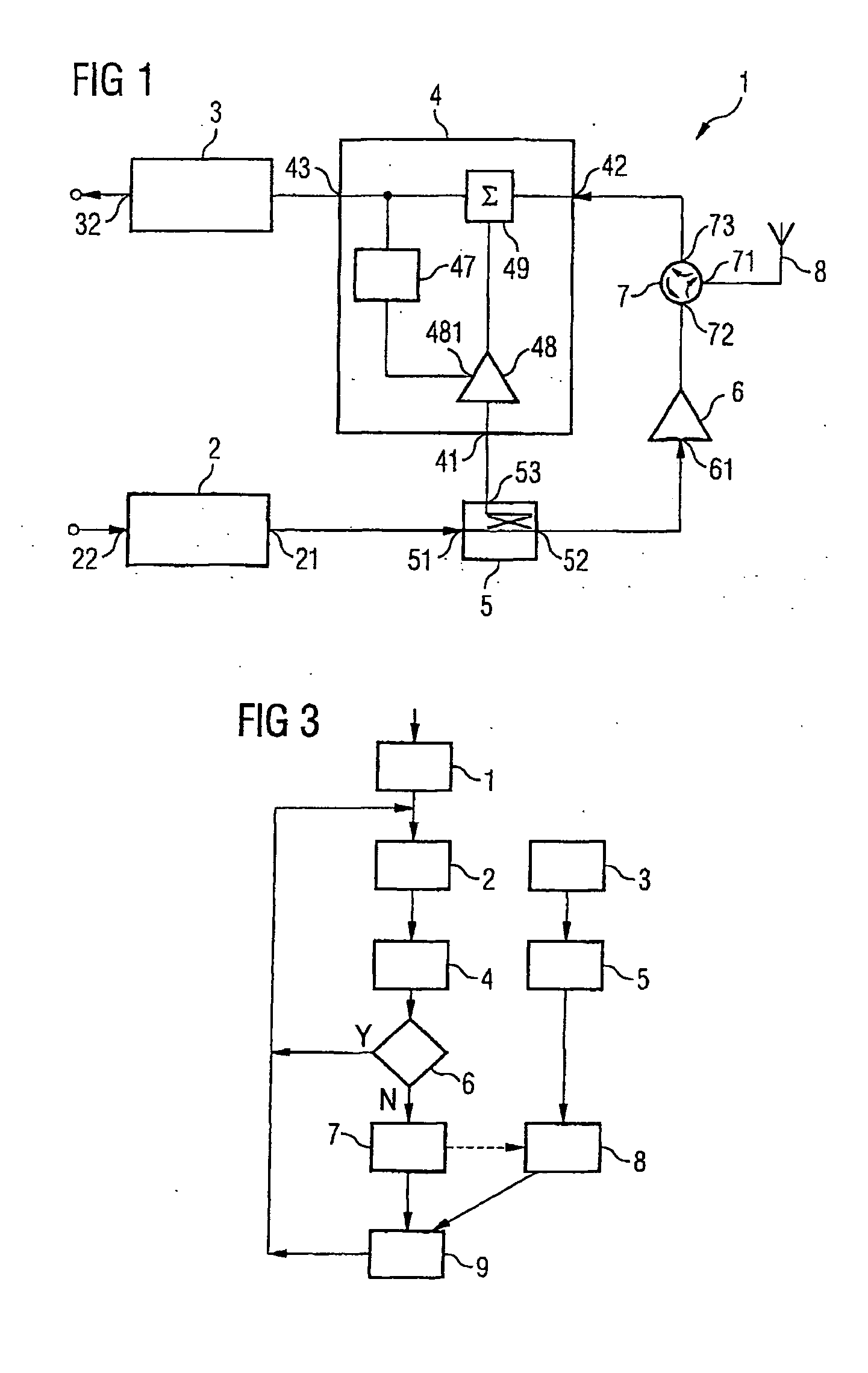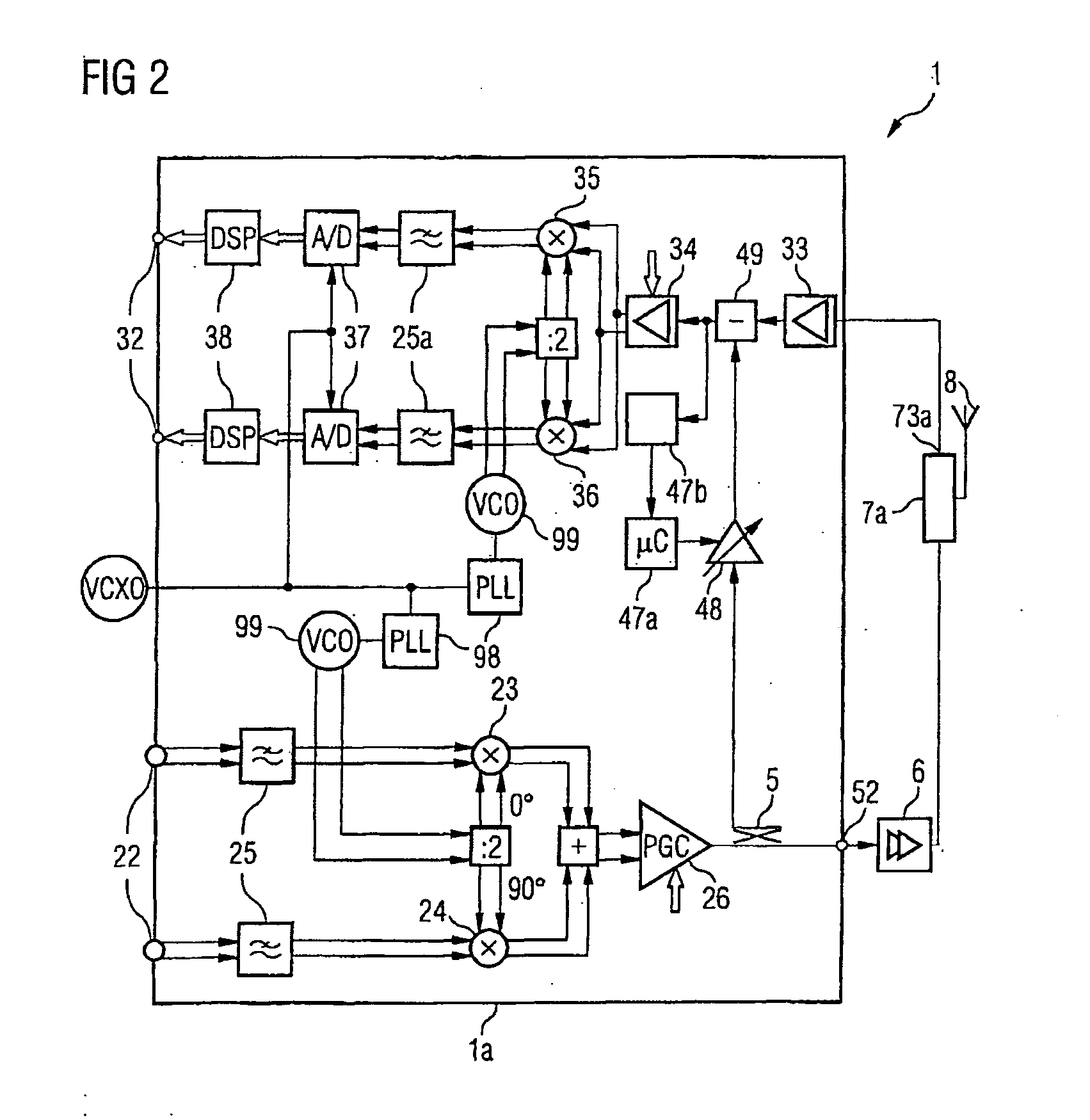Transceiver with interference signal rejection, and method for interference signal rejection
a technology of interference signal and receiver, applied in the direction of radio transmission, electrical equipment, transmission monitoring, etc., can solve the problems of increasing the probability of error of injection signal, and increasing the probability of error, so as to reduce the cost of power
- Summary
- Abstract
- Description
- Claims
- Application Information
AI Technical Summary
Benefits of technology
Problems solved by technology
Method used
Image
Examples
Embodiment Construction
[0033]FIG. 1 shows a block diagram of an inventive transceiver circuit for signal rejection for a signal crosstalking from a transmission path into a reception path. Such a transceiver circuit may be used in mobile communication appliances which can be used for mobile radio standards which have a frequency division duplexing operating mode (FDD operating mode). Examples of an FDD operating mode, in which signals are transmitted at a first frequency and signals are received at a second frequency, are UMTS / WCDMA, CDMA2000 or IS95. The interval between the transmission frequency and the reception frequency is dependent on the individual mobile radio standards. For the mobile radio standard UMTS, it is no more than 190 MHz.
[0034] The inventive transceiver comprises a transmitter or transmission path 2 with an input 22 and an output 21. In this case, the transmission path 2 is designed to convert signals applied to the input to the output frequency of the transmitted signal. To this end...
PUM
 Login to View More
Login to View More Abstract
Description
Claims
Application Information
 Login to View More
Login to View More - R&D
- Intellectual Property
- Life Sciences
- Materials
- Tech Scout
- Unparalleled Data Quality
- Higher Quality Content
- 60% Fewer Hallucinations
Browse by: Latest US Patents, China's latest patents, Technical Efficacy Thesaurus, Application Domain, Technology Topic, Popular Technical Reports.
© 2025 PatSnap. All rights reserved.Legal|Privacy policy|Modern Slavery Act Transparency Statement|Sitemap|About US| Contact US: help@patsnap.com



